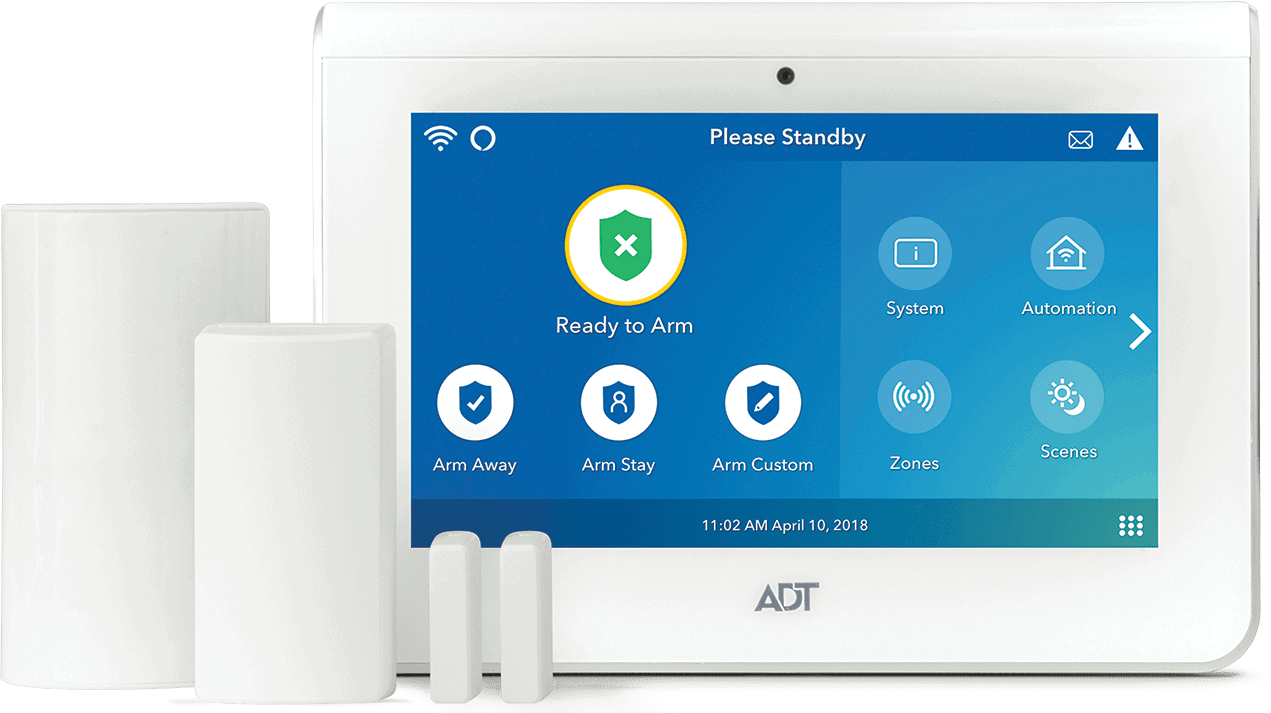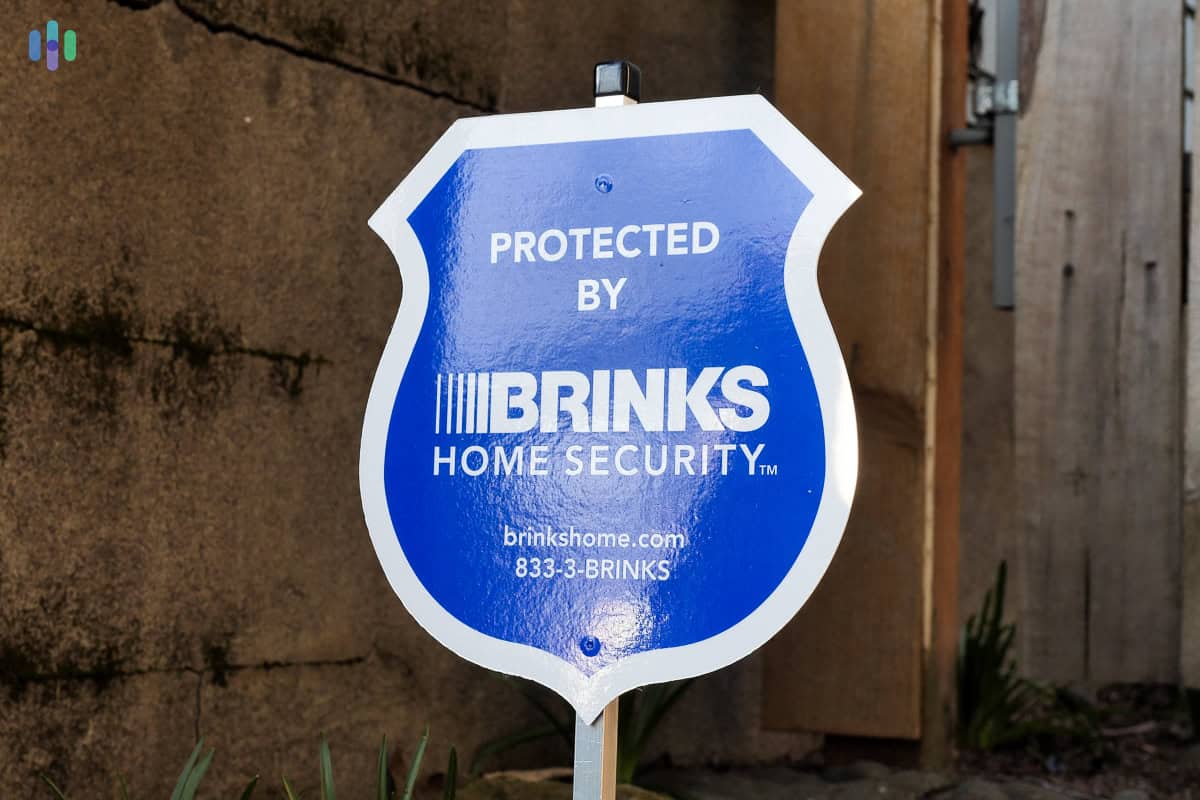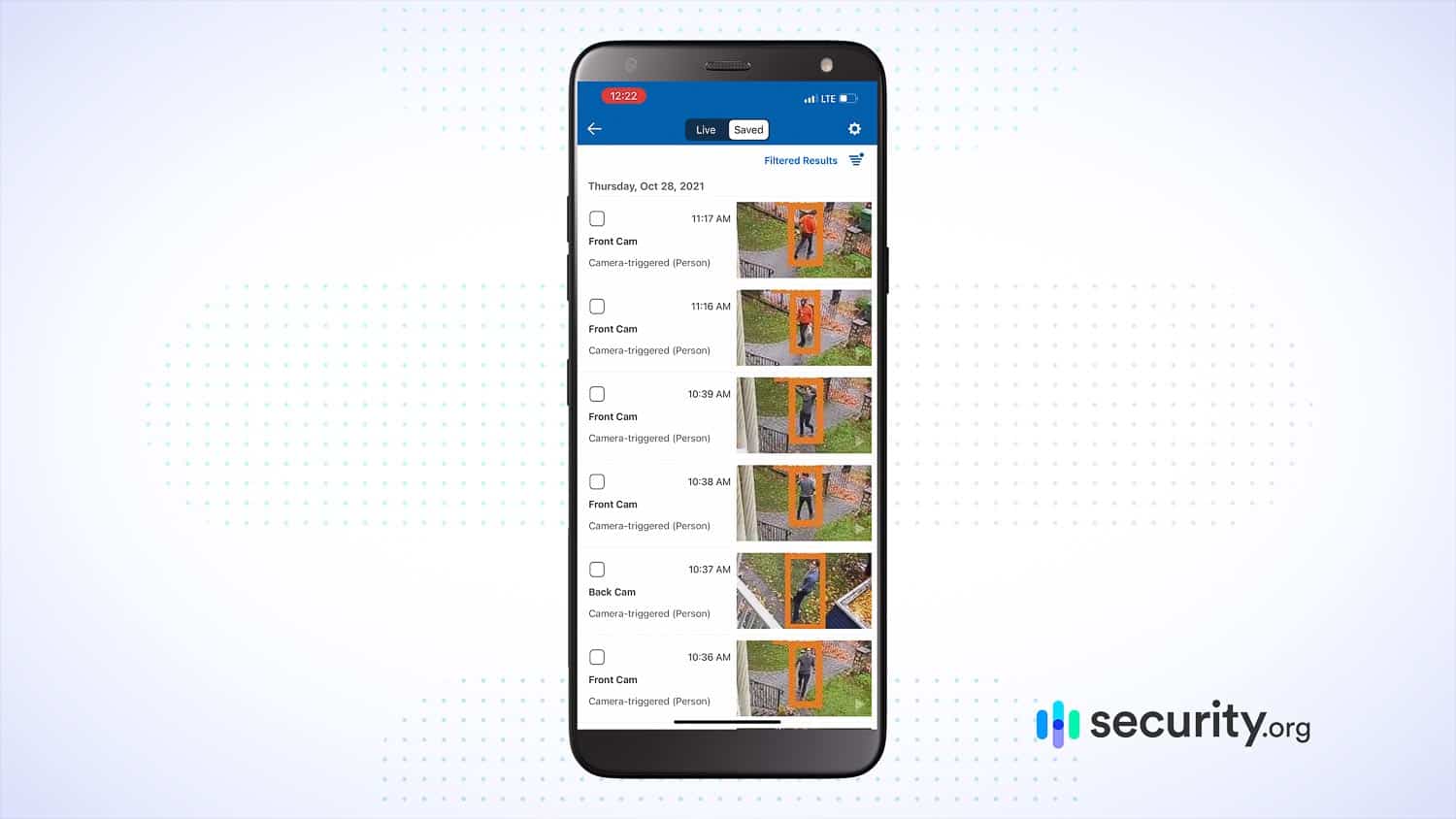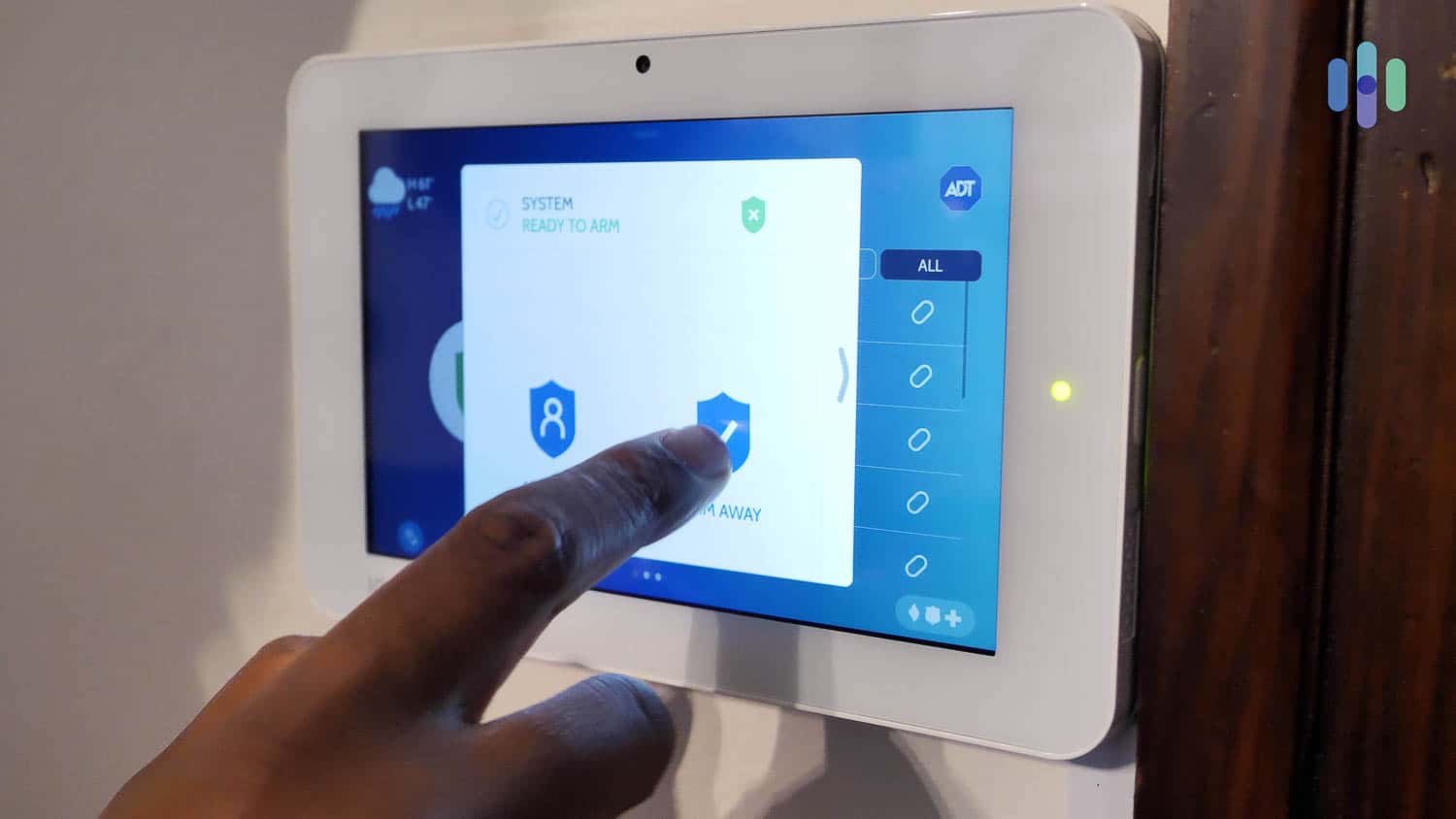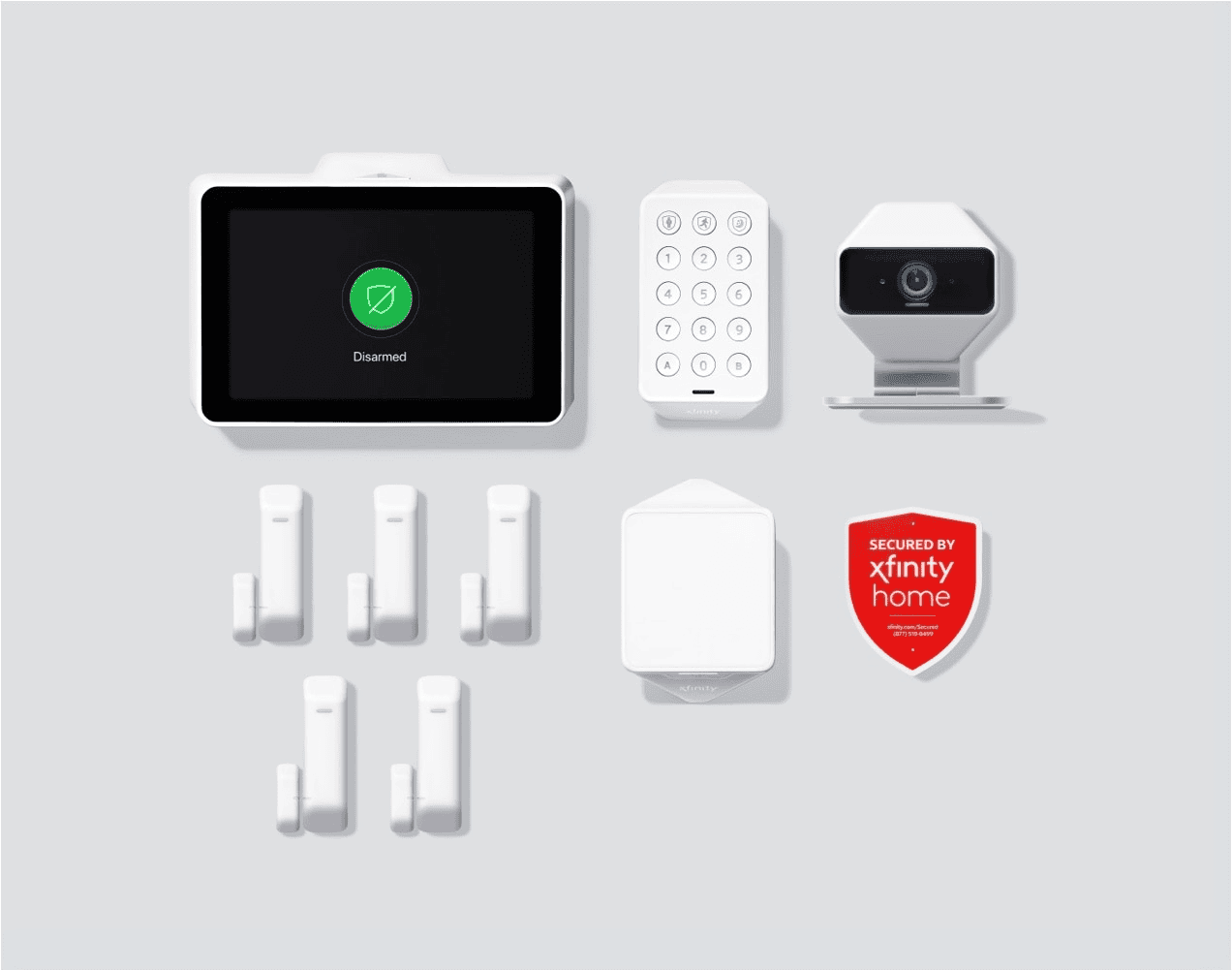ADT Security System Review: 2025 Test Results and Expert Recommendations
ADT’s strong Google Nest integration and innovative features like Trusted Neighbor keep it ahead of the curve, and with lowered prices, it’s accessible now more than ever.
 Aliza Vigderman, Senior Editor, Industry Analyst
&
Aliza Vigderman, Senior Editor, Industry Analyst
&
 Gabe Turner, Chief Editor
Last Updated on Jun 26, 2025
Gabe Turner, Chief Editor
Last Updated on Jun 26, 2025
What We Like
- Trusted company: With over 150 years in business, we felt comfortable with choosing ADT right off the bat.
- Smart home integration: ADT works with a variety of third-party smart home products, including Google Assistant and Alexa, to enable users automated control of their homes for convenience and ease of use.
- User-friendly app: The revamped ADT+ app is one of the best home security apps for managing and monitoring a security system.
What We Don't Like
- Professional installation with a fee: If you go with a professionally installed ADT system, you will have to pay a substantial one-time installation fee and more for professional monitoring.
- Restrictive monitoring plans: For security camera support and cloud storage, you’ll need ADT’s priciest professional monitoring plan.
- No touchscreen keypad: Current ADT systems come with analog keypads, which means you won’t be able to control smart devices and monitor cameras with this device.
Bottom Line
Recent News: If you’ve been holding out for an ADT deal, now is the time to sign up. ADT is offering up to 60 percent off its Trusted Neighbor system. That means you can get it now for the low price of $279 (normally $718).
If you’re thinking about installing a home security system, ADT is likely one of the first brands you’ll consider. ADT’s big, blue signs are everywhere, unsurprising considering they’ve been in business for over 150 years. Despite its popularity, how do you know if it’s the right security system for you?
Our experts bought the latest ADT security system to find out. We tried out Google Nest and ADT’s Trusted Neighbor feature, which uses facial recognition to disarm alarms and smart locks. Our team even tested motion zones and home automation rules. Let’s find out if it’s still one of the best home security systems around.
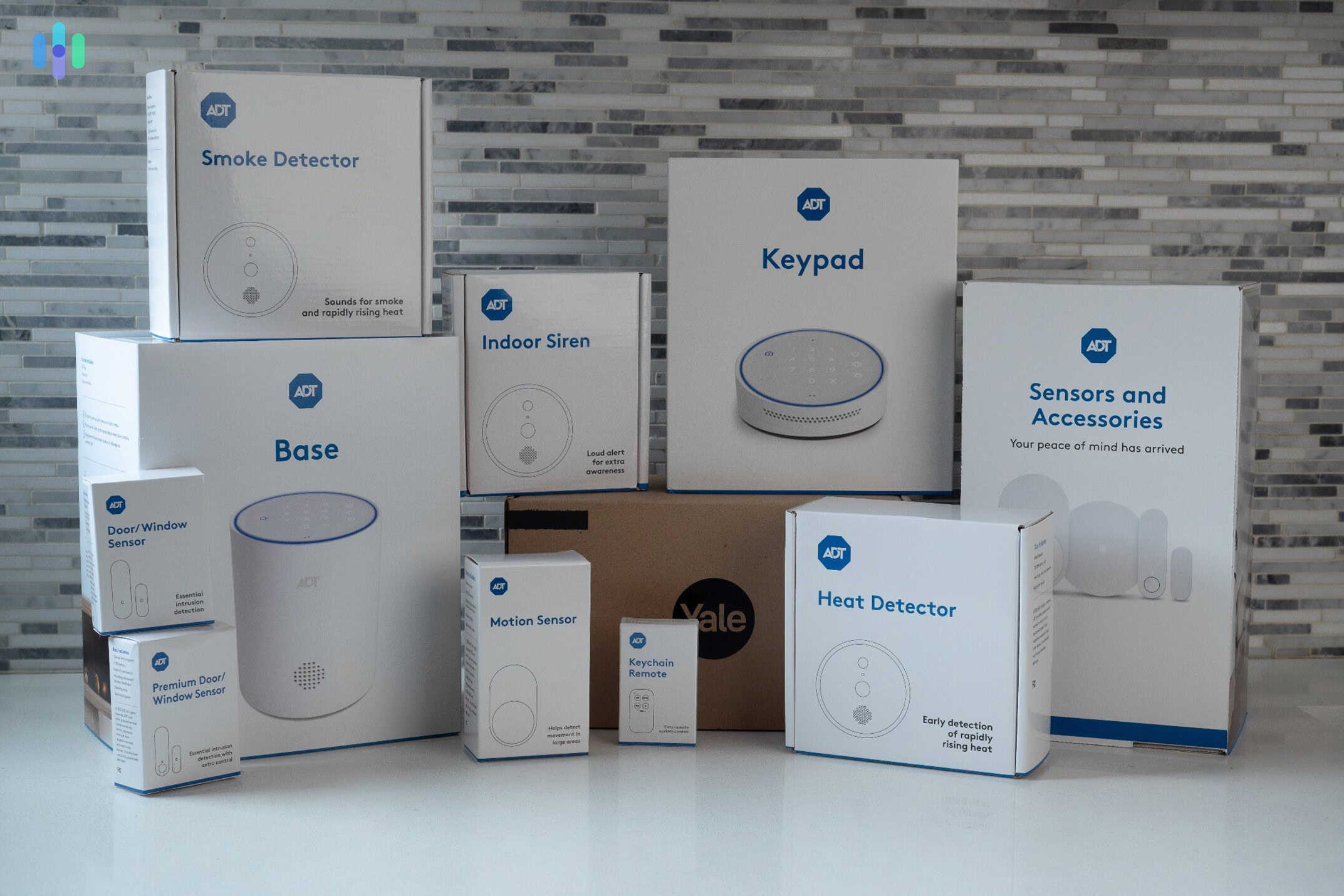

Our Hot Take on ADT Home Security
Overall Rating
- Professional installation available for all systems
- 24/7 monitoring centers nationwide
- 150+ years of home security innovation
With a 9.8 out of 10 rating from our team of security experts, ADT is as close to perfect as security systems can be. Our scoring method takes into account factors such as features and pricing, but also our hands-on, stringent review process. And after living with ADT for three months, we concluded that it’s one of the best security systems right now for most people.
Notably, we found that ADT offers the best equipment options and a reliable monitoring service. ADT also stands behind its industry-leading six-month money-back guarantee, which is one reason we found this brand trustworthy.
Key Features
| Control panel | ADT Base |
|---|---|
| Wireless controllers | Keychain remote, ADT+ app |
| Indoor camera | Google Nest Cam (indoor, wired) or Nest Cam (battery) |
| Outdoor camera | Outdoor camera Google Nest Cam (battery) or Nest Cam with floodlight |
| Video doorbell | Google Nest Doorbell (battery) |
ADT Home Security System Overview
ADT has changed significantly since the days of the ADT Pulse range, which featured ADT-built security cameras.1 Now you’ll get the more advanced Google Nest products. You’ll also have access to smart home integrations and other top-of-the-line security equipment ADT is known for. ADT has even created a new smartphone app so you can manage your ADT and Nest devices in one place.
ADT also has 12 monitoring centers across North America. It’s more than its competitors like Vivint, which only has two. This shows that despite being over 150 years old, ADT never stops evolving. Let’s take a look at the latest equipment range.
FYI: One of the major upgrades to the current ADT system compared to their older systems is the availability of DIY installation and monitoring options. While this page is all about the professionally installed system we tested (which also requires professional monitoring), you can check out our review of the more flexible ADT Self Setup system.
Our ADT Video Review
Before diving into our full review, watch our ADT video where our home security and security camera expert, Corey Birnstengel, breaks down ADT’s equipment and features. He also shows how the system works on a daily basis and demonstrates the new ADT app.
Components of the ADT Security System
ADT has an extensive range of equipment, allowing you to carefully choose exactly what you need for your home. For an apartment, you might only want a couple of sensors and an indoor security camera. If you live in a larger home, you can get outdoor cameras, video doorbells, and glass break sensors. Here are the ADT devices we tested:
- Base
- Keypad
- Door/window sensors
- Motion sensors
- Glass break sensors
- Keychain remotes
- Video doorbells
- Outdoor cameras
- Indoor cameras
- Smoke detectors
- Carbon monoxide detectors
- Water and temperature sensors
Base
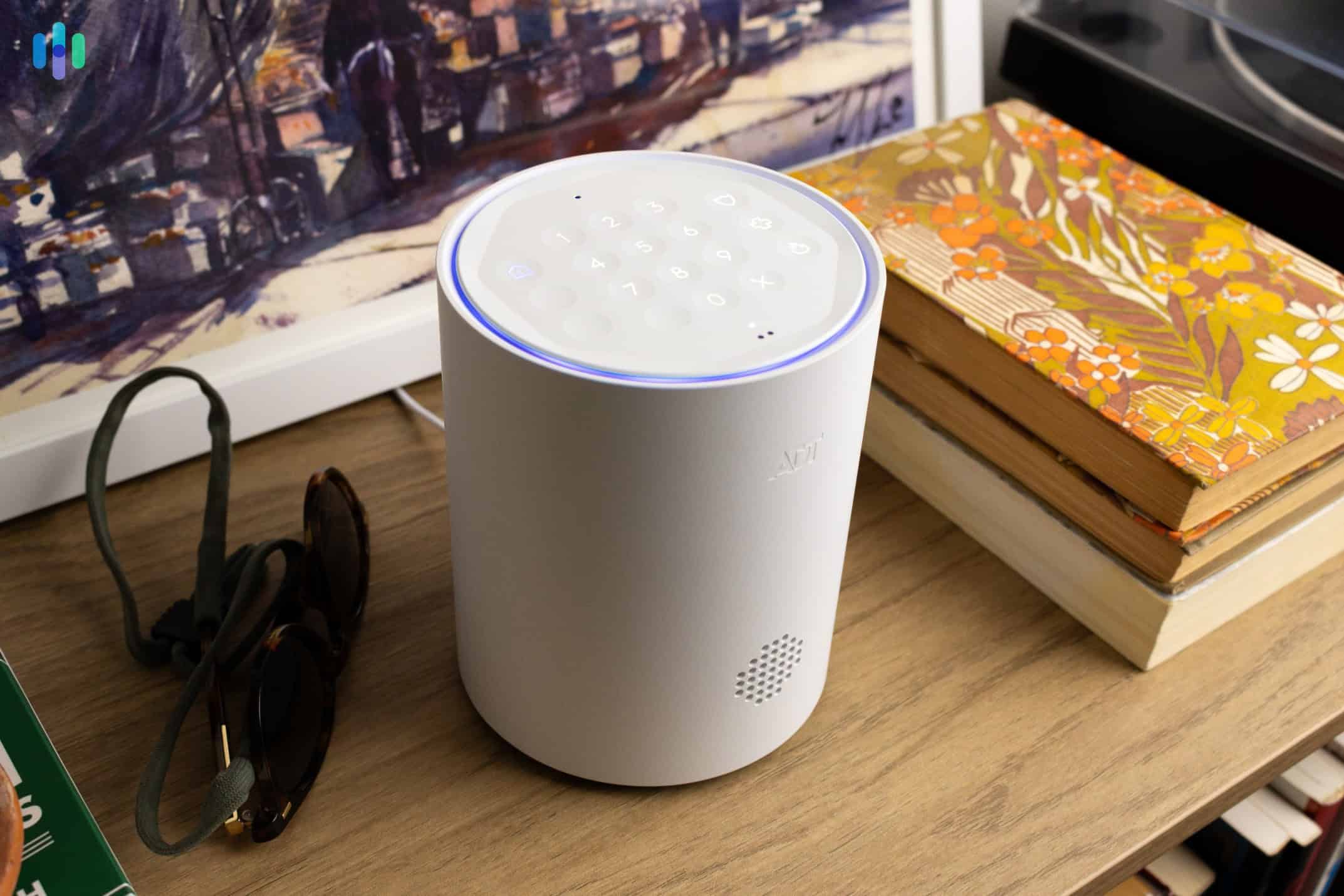
The Base is the first device the ADT technician set up. It’s the brains of the operation, connecting to the rest of our ADT equipment. It looks like a futuristic router that blends in seamlessly with the decor, so we had no problem putting it on display on a coffee table.
The Base doesn’t have a screen, but there is a keypad for arming and disarming your system. The lack of a touch screen is disappointing, especially after reviewing Vivint’s innovative, touch screen Smart Hub. That said, we appreciate that the ADT base station has battery backup. The battery powers the device for up to 24 hours during outages.
FYI: The Base uses cellular signals as a backup for its Wi-Fi connectivity. That’s standard with the best cellular security systems such as ADT.
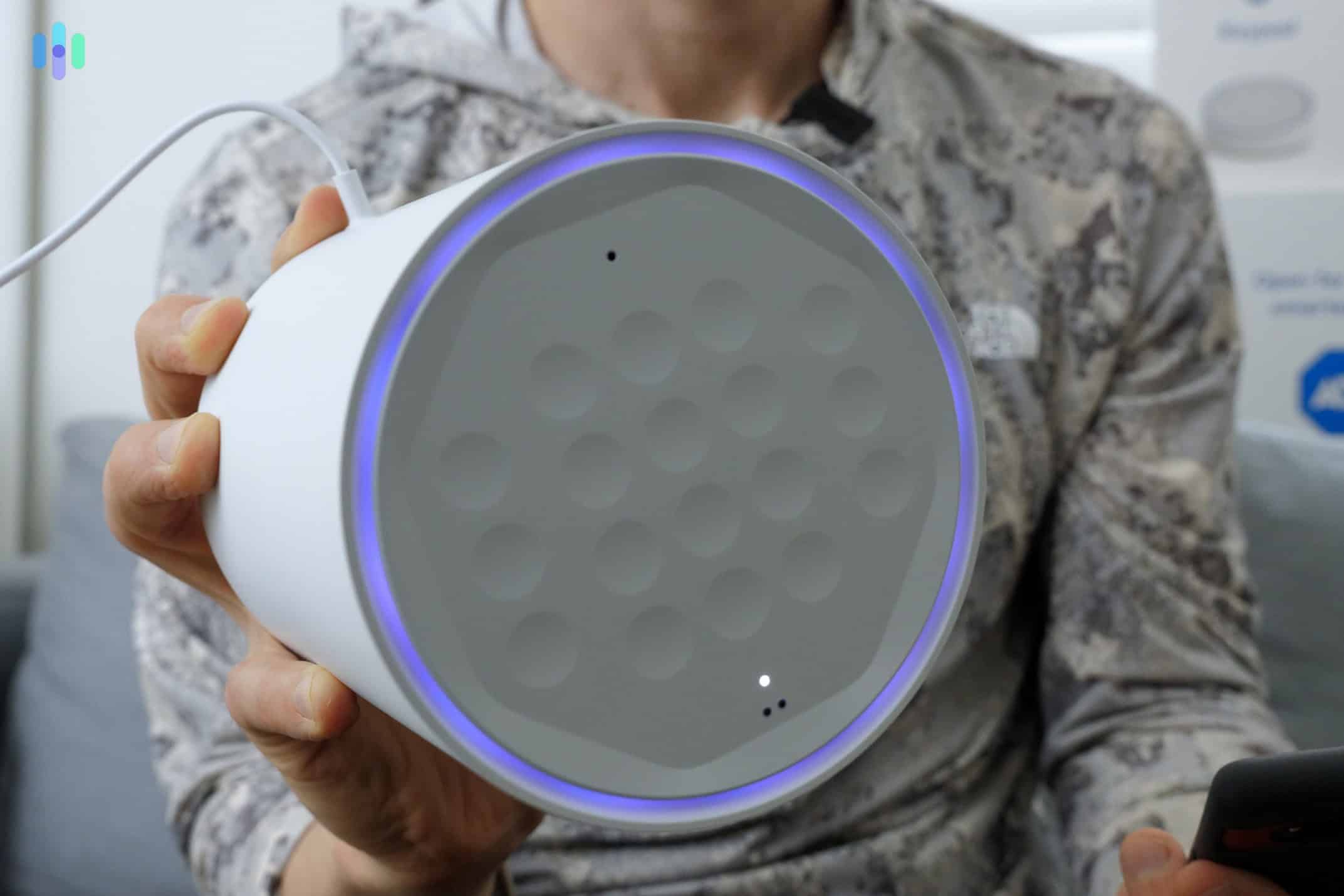
Another nice touch is the base’s ring light that changes color based on the system status. It’s helpful if you need a security system for someone hard of hearing. The base lit up every time we came near it, thanks to a proximity sensor. It also has buttons for police, medical, and fire, so you can request help fast.
Door/Window Sensors
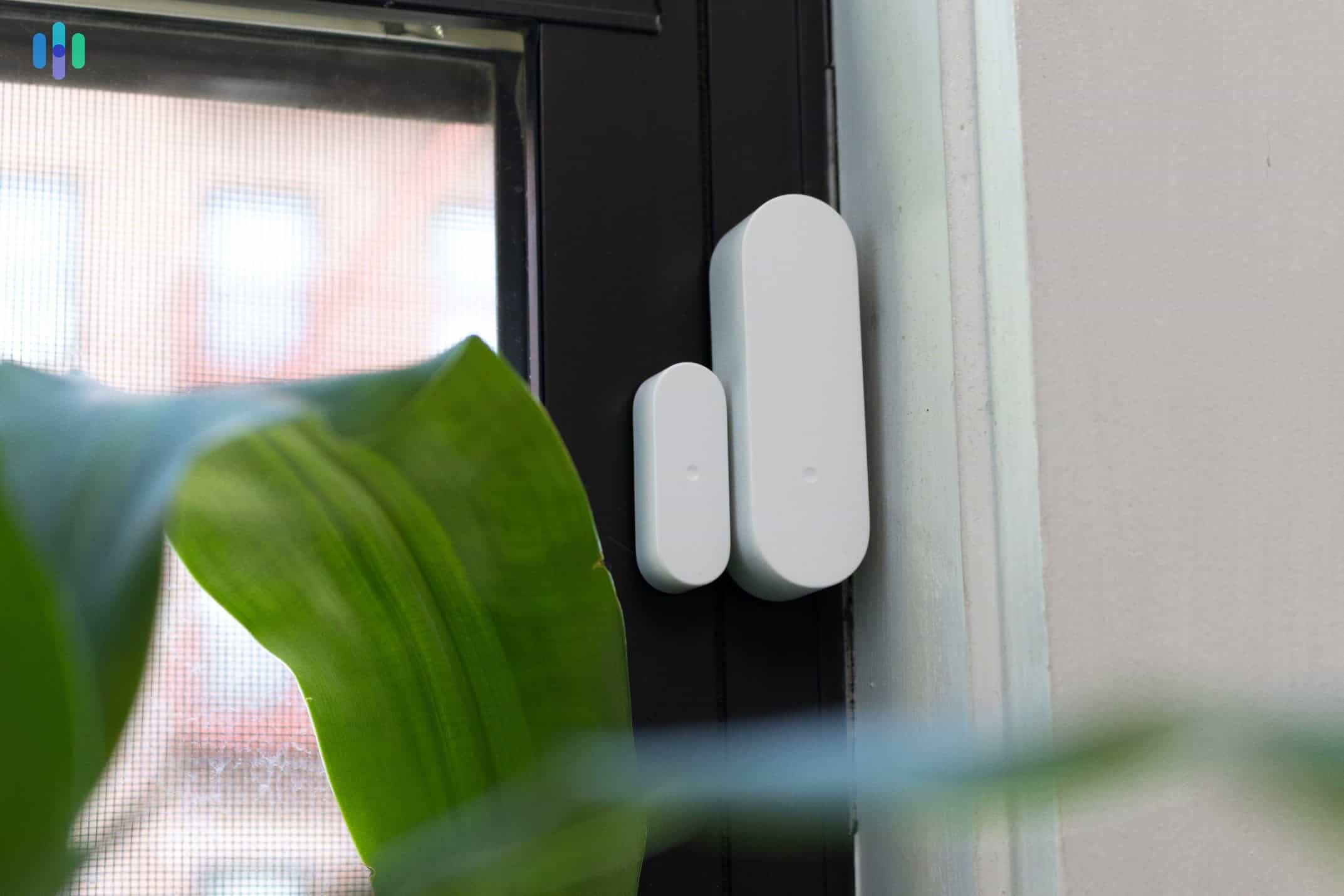
Door/window sensors, or simply entry sensors, monitor the opening and closing of doors. Our technician recommended the best places for our three entry sensors – the front door and two separate windows on the first floor. We recommend getting more than three, though. Interior access doors leading to a garage, back doors, and even second-floor windows could all use entry sensors.
Take note that we only tested the standard door/window sensors from ADT. There’s also a premium version that costs twice as much, but can also detect shock and vibration. If a burglar tries to force their way in – let’s say, by kicking down your door or breaking a glass window – the premium door/window sensors will detect it. We also see them being suitable for cabinets and drawers where you might store valuables like jewelry or firearms.
Expert Insight: Although the FBI no longer includes this in their newer reports, the last data published in 2019 shows that more than half of reported burglaries in the U.S. involve forcible entry.2
Keychain Remote
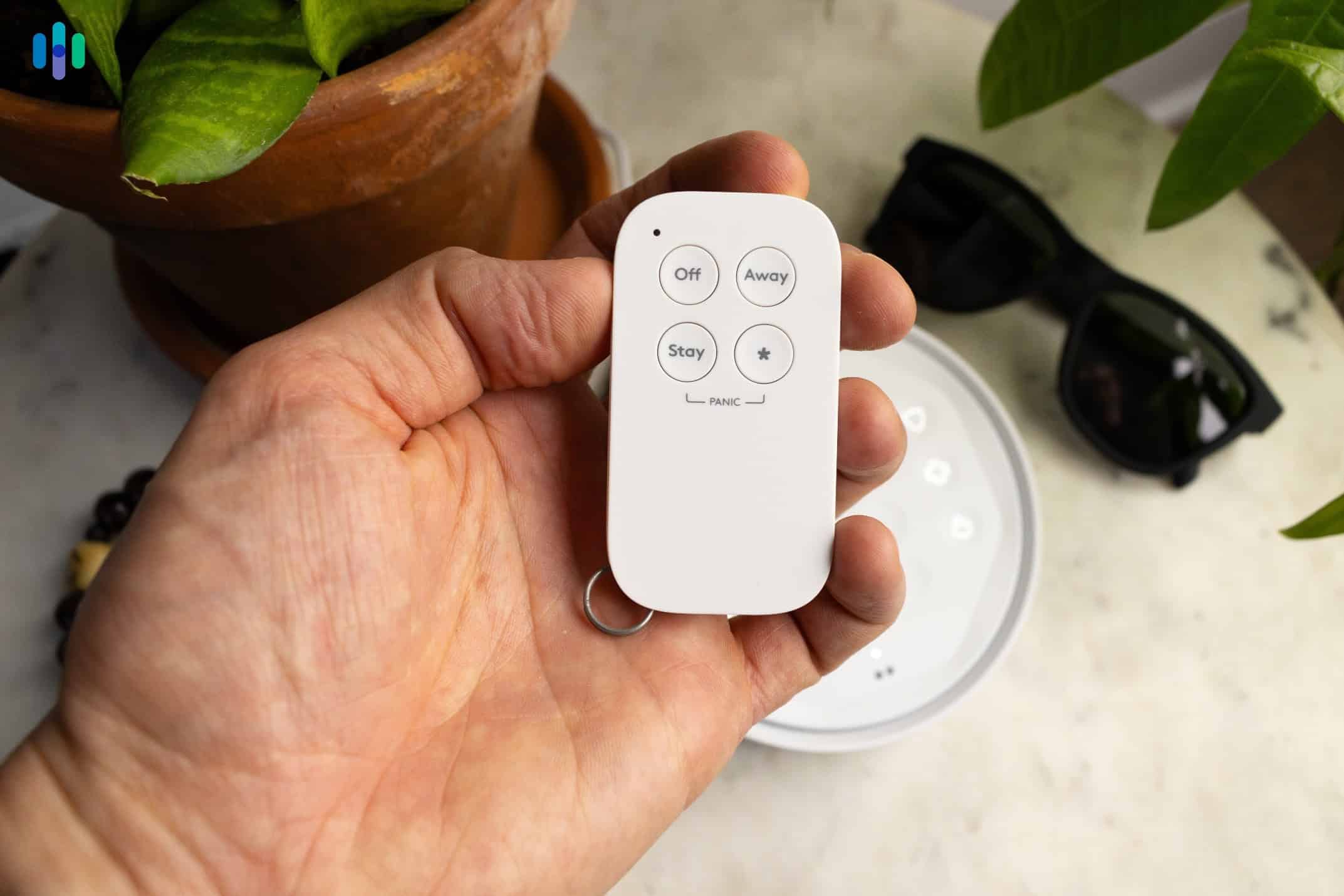
The keychain remote is one of the reasons we recommend ADT as the best home security system for seniors. You can use this device to arm and disarm the system instead of the app or base station. It looks like a garage door opener, but with disarm, arm Stay, arm Away, and customizable help buttons. You can use the help button to call for medical, fire, or police dispatch.
We also appreciate the Panic option that calls the attention of ADT’s monitoring center. It requires pressing two buttons to activate (the help and Arm Stay buttons) – convenient but not prone to accidental dials. We haven’t had the chance to use it in a real emergency, but it could be useful for household members with medical conditions.

Motion Detector
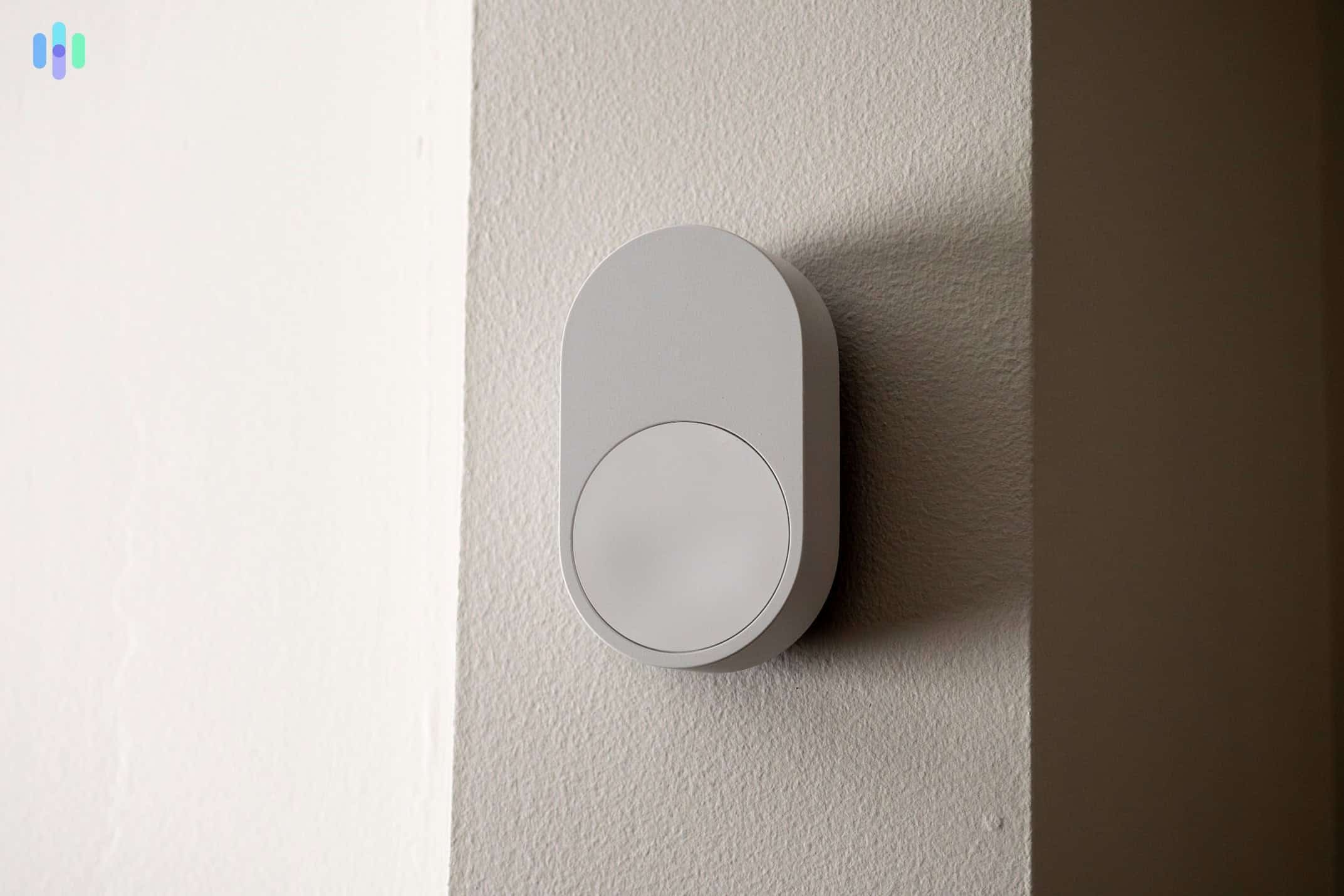
Motion detectors use passive infrared to detect moving subjects that emit body heat, like humans or pets. The ADT motion sensor has a 90-degree horizontal and 50-degree vertical field of view, which was more than enough for our living room.
If you have pets, you can adjust the sensitivity to make it pet-friendly, meaning, pets’ movements won’t trigger it. Set to the lowest sensitivity, it was able to ignore our 65-pound Labrador Retriever, but the technician told us it can ignore pets up to 85 pounds. Of the security systems we recommend to pet owners, ADT’s motion sensor is the most friendly to large pets.
Pro Tip: You can set the motion sensors to Convenience Mode which sends a notification to your phone when motion is detected without triggering the alarm
Glass Break Sensors
ADT’s glass break sensor has a 25-foot range at maximum sensitivity, but if you’re like us and tend to be clumsy with glasses, you can adjust it with four sensitivity levels. Our ADT install technician placed the glass break sensor opposite our sliding glass doors leading to the patio as it works best facing the source.
FYI: An alternative to installing a glass break sensor is using the Google Nest Hub Max’s sound-detection feature, which alerts you when it hears glass breaking. You’ll need either a separate Nest Aware subscription or ADT’s top-tier monitoring plan to enable this feature.
Smoke Detector
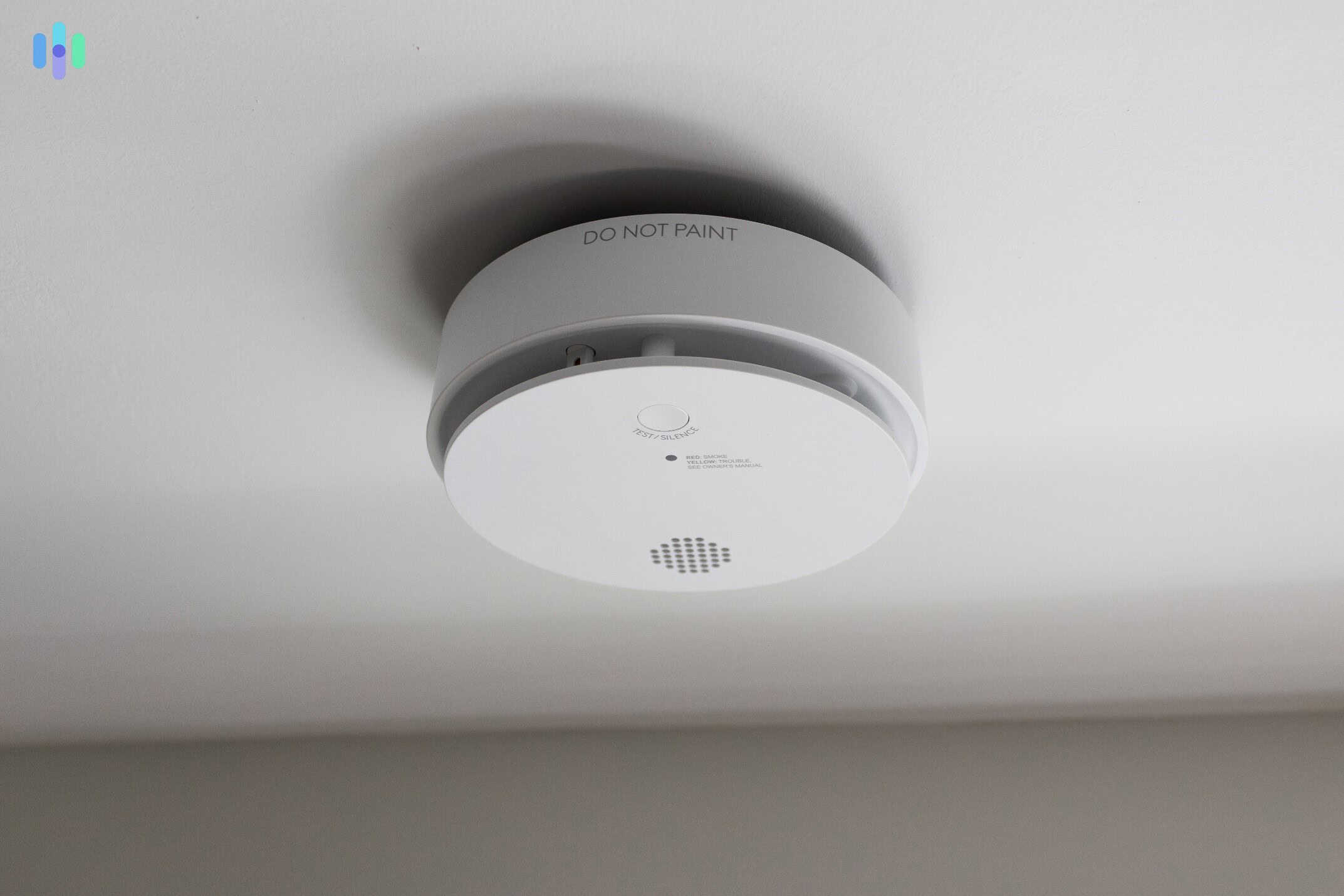
ADT sensors go beyond home security. The Wi-Fi smoke detector protects you from fire. It doesn’t just sound the alarm like most smoke detectors do. When we burned some toast, our smoke alarms triggered a response from the monitoring center as well. Plus, we learned that our three ADT smoke alarms are interconnected; if one sounds, they all sound.
We also like that the smoke alarms from ADT connect to the base station. That means ADT can send smartphone app alerts. You will be notified wherever you are. That’s an upgrade to traditional smoke alarms that can only alert you if you’re within earshot.
FYI: If you already have smoke alarms and don’t want to change them all to ADT’s smoke detectors, we suggest putting up ADT’s security cameras instead. The Nest Cam (indoor) and Nest Cam (battery) have sound detection that can alert you when a smoke alarm or gas leak detector goes off. The alert doesn’t go to the monitoring center, but at least you’d be notified wherever you are.
Carbon Monoxide Detector
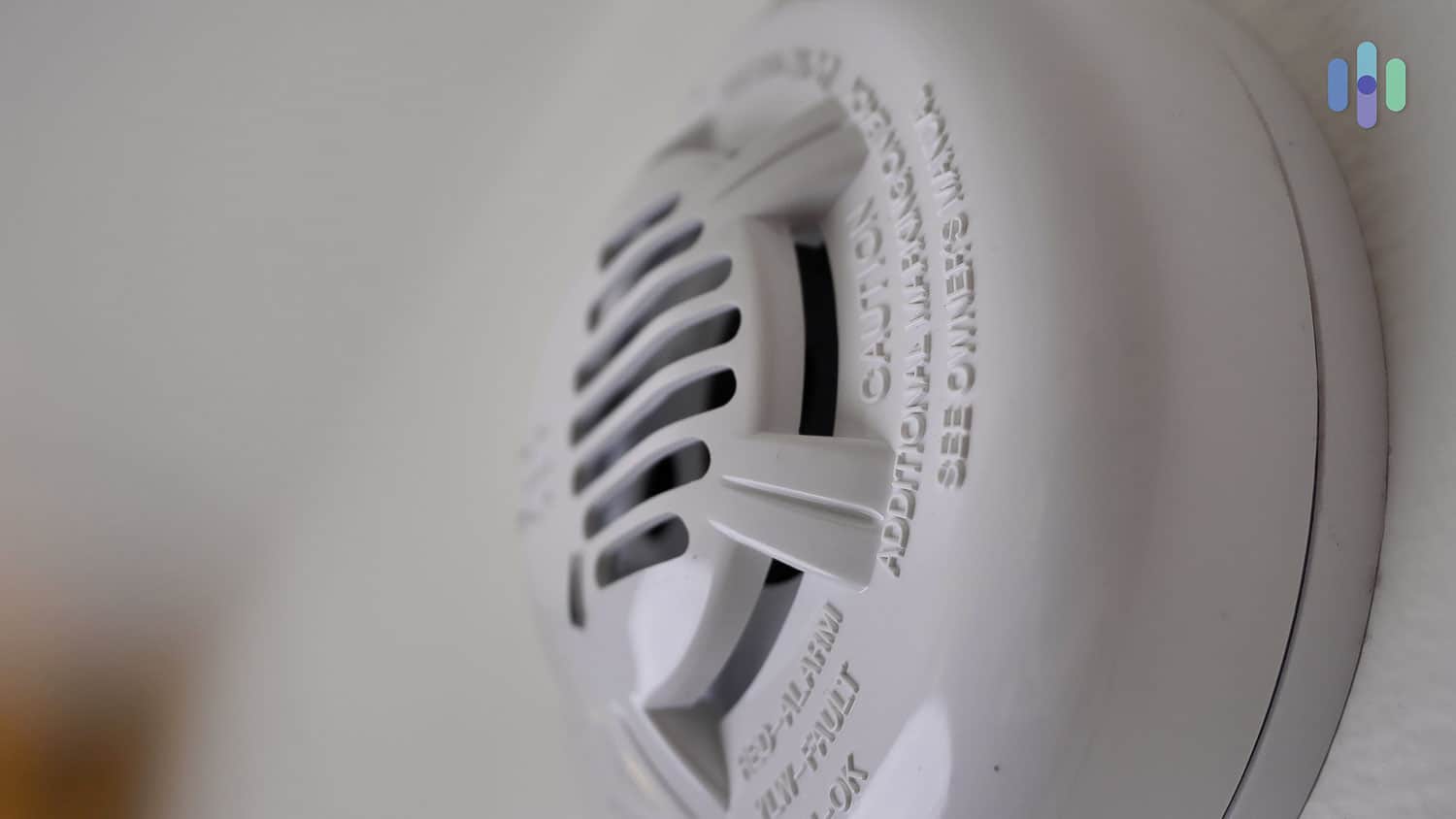
While we installed ADT’s carbon monoxide detector, we couldn’t safely test it. What we do know is that the device is tamper-proof. It also has an LED light to indicate the alarm condition.
When it’s green, everything is functioning normally. A blinking amber light means the device requires maintenance. The light flashes red when it detects carbon monoxide. There is a hush button to silence the device for five minutes in case there’s a false alarm.
FYI: ADT also offers other smart home products like smart light bulbs, thermostat, plugs, and garage door controls, but since they’re only tangentially security-related, we didn’t test them out for this review.
ADT Security Cameras
ADT security camera lineup features the latest Google Nest range. We got one of each, including the Nest Doorbell, one of our favorite video doorbells. Here’s how each security camera performed.
Google Nest Cam Options from ADT
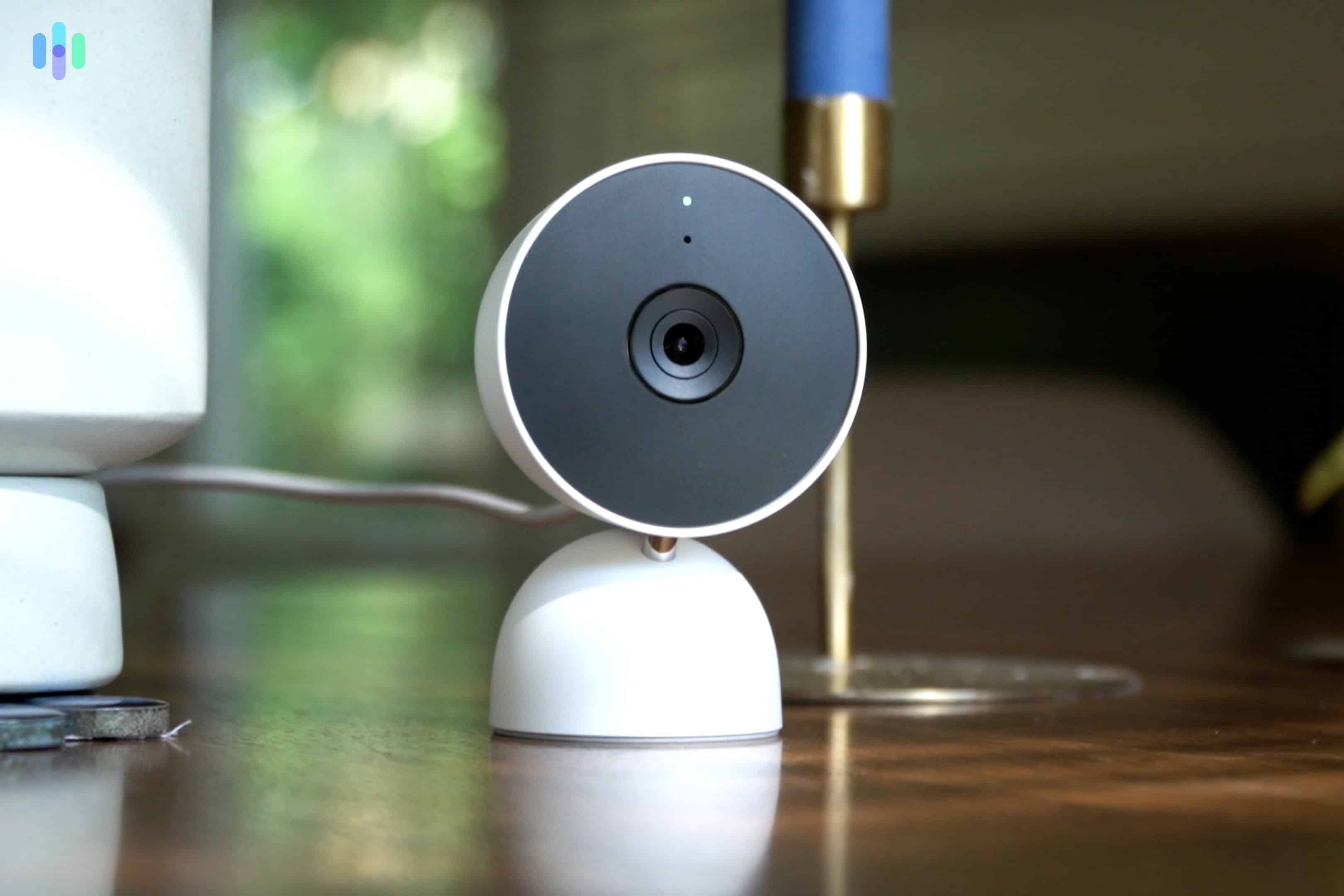
The Google Nest security cameras are on our list of the best security cameras because of their impressive video quality (1080p HD with HDR) and their artificial intelligence. The AI allows the cameras to recognize faces, so whenever our sitter comes to our house, the Nest Cam assures us that it’s not a stranger. There are four models available to purchase from ADT:
- Nest Cam (battery): Easy to install inside and outside and has a 130-degree field of view. It’s battery-powered, so you don’t have to worry about plugging it in.
- Nest Cam (indoor, wired): It has a slightly wider field of vision than the battery-powered model, but it only works indoors and needs to be plugged in.
- Nest Cam with Floodlight: This outdoor camera has two protruding floodlights that you can control via the app, but the whole unit needs to be hardwired into a junction box.
- Nest Doorbell (battery): This doorbell camera features a 145-degree field of view and a 960 by 1280 resolution. Because it’s battery-powered, you don’t need existing doorbell wires.
>> Learn More: Nest Cam (battery) Review
ADT + Nest Cam – Additional Features
If you decide to go with one camera or the entire range of Google Nest camera products, similar to Vivint’s packages, you’ll only have one monitoring plan to choose from. Unfortunately, it’s the most expensive option.
However, we think you get your money’s worth. The Complete plan offers up to 30 days of cloud storage for all your Nest cameras. Normally this requires an $8 per month Nest Aware subscription. The plan also includes smart home automation like scheduling alarms or turning on lights when motion is detected. You even gain other smart features including AI detection, facial recognition, and sound detection.
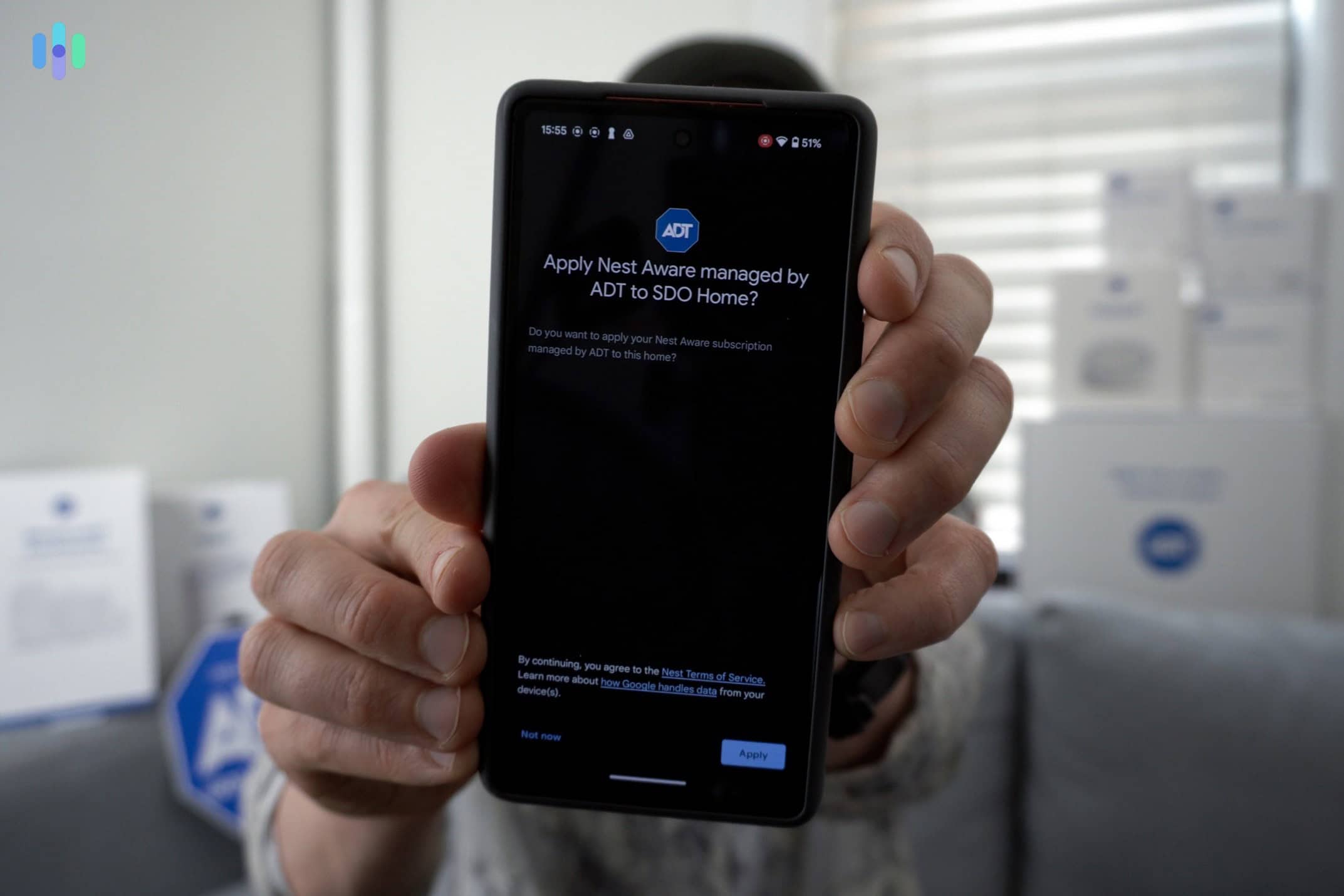
Pro Tip: If you currently have Nest Cams and a Nest Aware subscription, go ahead and cancel it. Signing up for ADT’s top-tier monitoring plan and linking your Nest Home account will reactivate the subscription without added fees.
The Complete plan also includes video verification. When an alarm occurs, ADT monitoring agents check your camera’s live feeds to confirm if you accidentally tripped the alarm or if they should send help. This verification typically speeds up police response times.
There’s one more feature – called Trusted Neighbor – that deserves its own section. That’s next.
What is Trusted Neighbor?
Trusted Neighbor uses Nest’s facial recognition technology to unlock smart locks and deactivate your security system. You can register and authorize regular guests like friends or family members, and when they approach your home, the system sends their phone a notification to gain access.
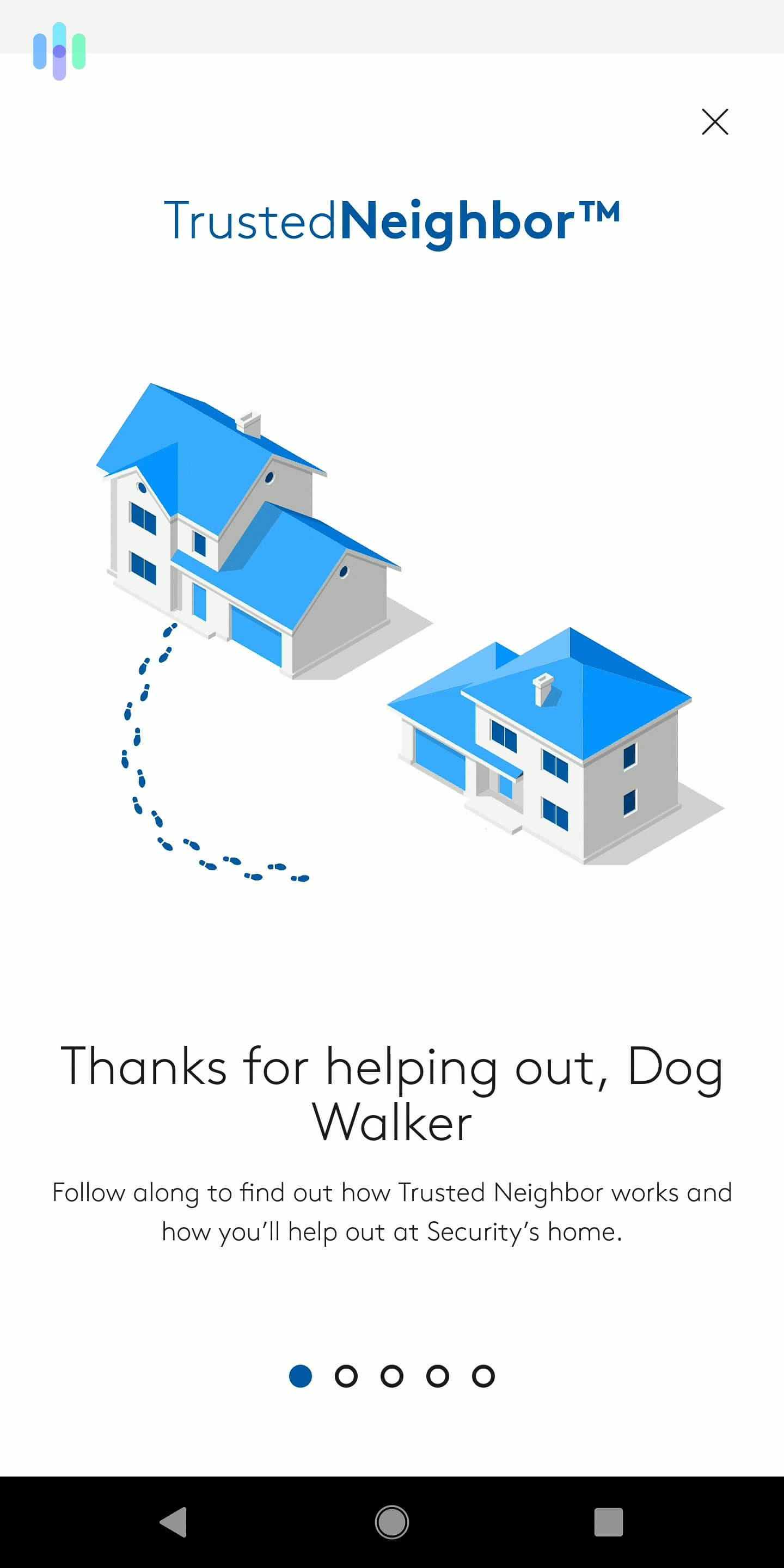
You can set time-based and event-based rules to decide when each ‘trusted neighbor’ is allowed entry. For example, we set ADT Plus to let our babysitter into the house between 4 and 5 P.M. to look after the kids. For event-based rules, you can set your system to only let people in when your smoke alarms detect fire – to let your pets out, for example.
FYI: Trusted Neighbor is a great feature, but SimpliSafe’s Intruder Intervention might be better. When we reviewed SimpliSafe, we witnessed SimpliSafe agents access our security camera’s two-way audio speaker to check in on us after we accidentally tripped the alarm. It made us jump a little, so imagine how a burglar would feel.
Home Automation with ADT
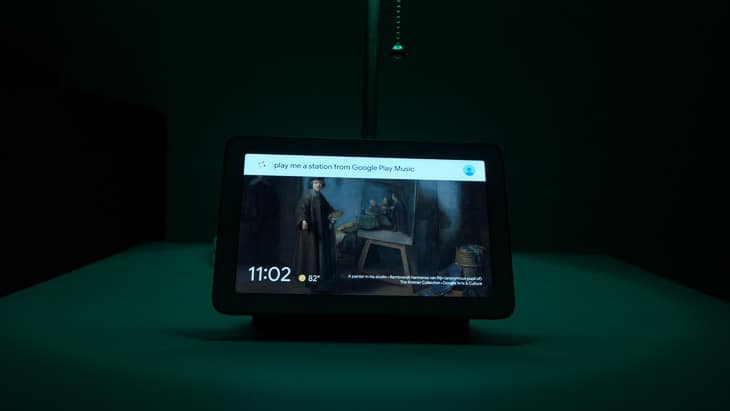
So, how well does ADT’s home automation work? Well, we were able to control the system with our voices. We mainly used Google Assistant via the Nest Hub we tested previously, but you can also use Alexa-enabled devices.
Simple commands like “arm my system” worked flawlessly, but since ADT’s base station also functions as a smart home hub, we were able to control other connected devices. For example, you can ask your voice AI to lock the door if you have a smart lock connected to ADT, or to set the temperature if you have a connected smart thermostat.
Pro Tip: If your smart devices integrate directly with Google Assistant or Alexa, it’s better to control them directly instead of via ADT. Some commands require you to say additional commands (i.e. “ask ADT to…”), so native voice assistant integrations always work better.
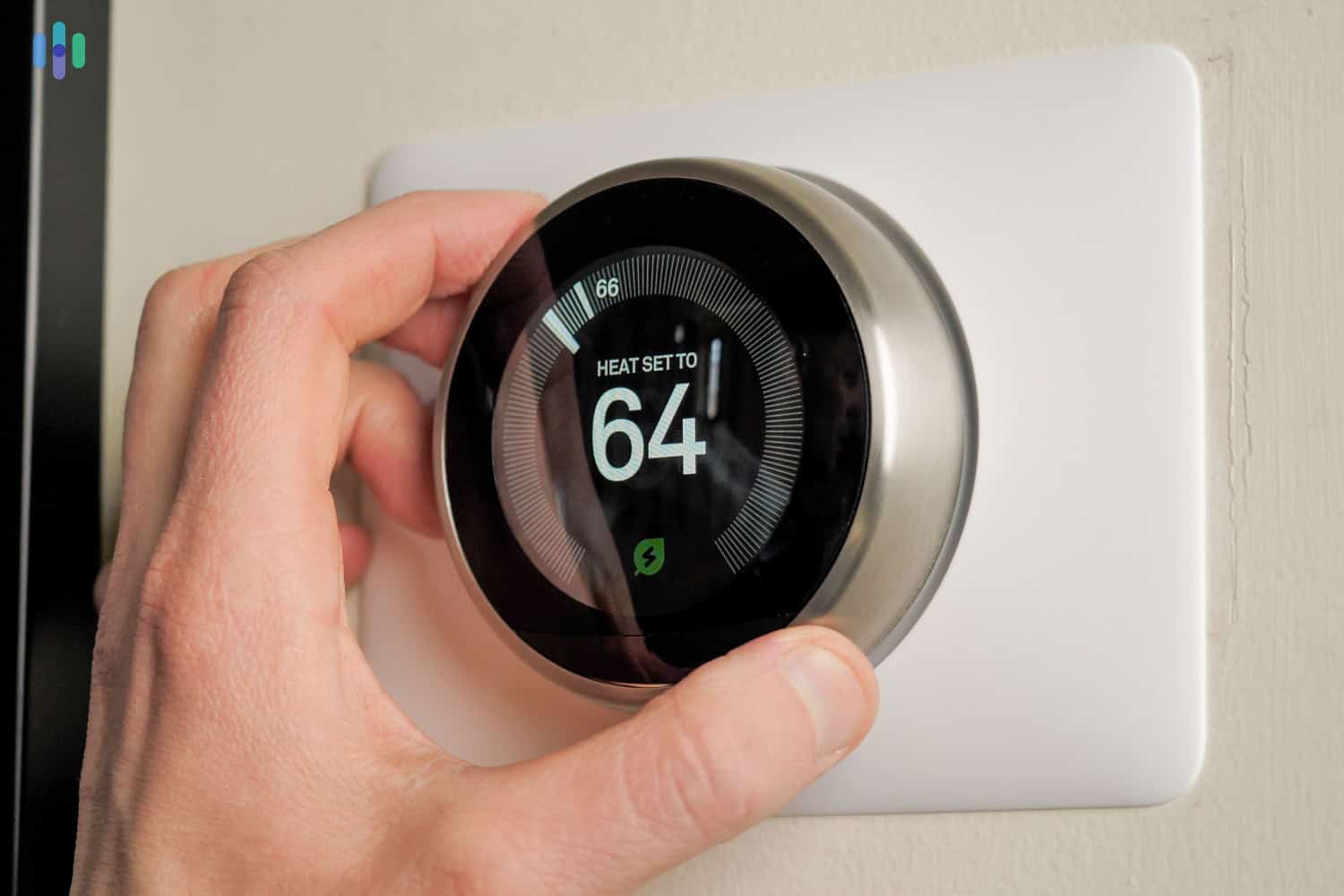
We should also point out that as a smart home hub, you can use ADT to create automated rules, similar to how IFTTT works. That means you don’t need an IFTTT-compatible system to make your lights turn on when the front door is opened. You can create these automations using the ADT+ app.
>> Learn More: The Best Smart Home Security Systems of 2025
ADT’s automated rule recipes consist of three ingredients – a trigger, an action, and conditions. For example, we set all our lights to turn on when smoke is detected. That way, in case of fire, we could easily find our way out.
Expert Advice: To set up that automation, we set the smoke alarm as the trigger device, and our Z-Wave lights as the action devices. If you want, you can also set conditions or exceptions based on time of day (or days of the week), or depending if the system is armed or disarmed.
These automation rules put ADT in the same level as abode (see our abode review) and Vivint in terms of smart home capabilities. We recommend exploring the automation features and to come up with your own automations to make your home safer, more secure, and smarter.
ADT’s Monitoring Plans
You can self-monitor your ADT system if you install the equipment yourself, but for those who will opt for professional installation like us, monitoring is required. And yes, there’s a monthly fee attached to it. Also note that monitoring plans for professionally installed ADT systems cost more than the plans for DIY systems.
>> Check Out: Best Unmonitored Home Security Systems
| Secure | Smart | Complete | |
|---|---|---|---|
| 24/7 intrusion, fire, emergency monitoring | Yes | Yes | Yes |
| SMART Monitoring | Yes | Yes | Yes |
| ADT mobile app | Yes | Yes | Yes |
| Smart home integration | No | Yes | Yes |
| Nest Aware | No | No | Yes |
| Video verification | No | No | Yes |
| Trusted Neighbor | No | No | Yes |
| Monthly price for Self Setup customers | $24.99 | $29.99 | $39.99 |
| Monthly price for professionally installed systems | $34.99 | $39.99 | $49.99 |
The top-tier option with video security offers the best value because it includes a Nest Aware subscription for the Nest Cams, which goes for $8 per month when bought directly from Google. Learn more about Nest Aware subscriptions here.
FYI: You can add a Quality Service Plan (QSP), an extended warranty plan for your equipment, starting at $7 per month. Just keep in mind that the cost of the QSP scales with the number and type of devices you have.
Truth be told, those prices aren’t the lowest in the industry. If you’re looking to save money, there are companies that offer monitoring for as low as $19.99 per month (looking at you, Cove! Read more in our Cove review.) You could even consider SimpliSafe if you want a security system with advanced monitoring features at a similar price.
That said, ADT’s pricing isn’t half bad. It actually falls around the industry average, and it could make sense to go with ADT despite it seeming expensive if you’re looking for premium professional monitoring and cellular backup. Besides, there are ADT deals all throughout the year to help you offset the cost.
Is ADT Monitoring Worth It?
There are plenty of reasons why we think ADT monitoring is worth it, but two stand out. First, while testing response times, we always heard from ADT within 30 seconds. That’s the industry average. Sure, some systems respond faster, but we consider this the sweet spot. It’s enough time to cancel false alarms, but it’s not long enough for burglars to grab your stuff and bolt.
Second, ADT has 12 fully-redundant monitoring centers. The significance of that is even if one facility fails to operate – for example, if there’s a natural calamity in its area – ADT’s monitoring will continue. These 12 facilities are spread out throughout the U.S. and Canada, and they are all linked together.
Our Experience: ADT also has a monitoring feature called SMART Monitoring, which uses text-based alerts. These alerts are sent to all household members within 10 seconds of an alarm. They include a link to a group chat, where members can collectively decide whether to send emergency help or waive off the alarm. If no action is taken in roughly half a minute, only then will ADT proceed to call the registered phone numbers to check on things.
Our Installation Process with ADT
ADT no longer requires professional setup with the new ADT system, but it’s still available for an extra cost if you need a hand. However, you’ll need to call ADT to get a quote and finalize the purchase of your system.
Previous ADT Black Friday and Cyber Monday deals have included free video doorbell installation, but we’ve never seen full-system installation available. That’s not to say you can’t get a good deal. Installation costs start at about $100, but we’ve successfully negotiated rates with ADT sales teams. So it doesn’t hurt to ask for free installation when you’re discussing system costs.
Our Experience: We think highly of ADT’s professional installation. The technician arrived on time, acted professionally, and completed the installation in a little over an hour.
ADT Apps
You might have seen a few ADT apps on the App Store and Google Play. It’s ok, they’re all official. ADT Pulse and ADT Control are for customers who have been with the company for a while. But all new customers will download ADT+.
You can use ADT+ to set up, control, and monitor all your equipment. It can even help you add compatible third-party devices. We used ADT+ mostly during our testing of the ADT Self Setup system. The app guided us through how to install and configure each device. It also performed tests to make sure we did it right. Thankfully, we did.
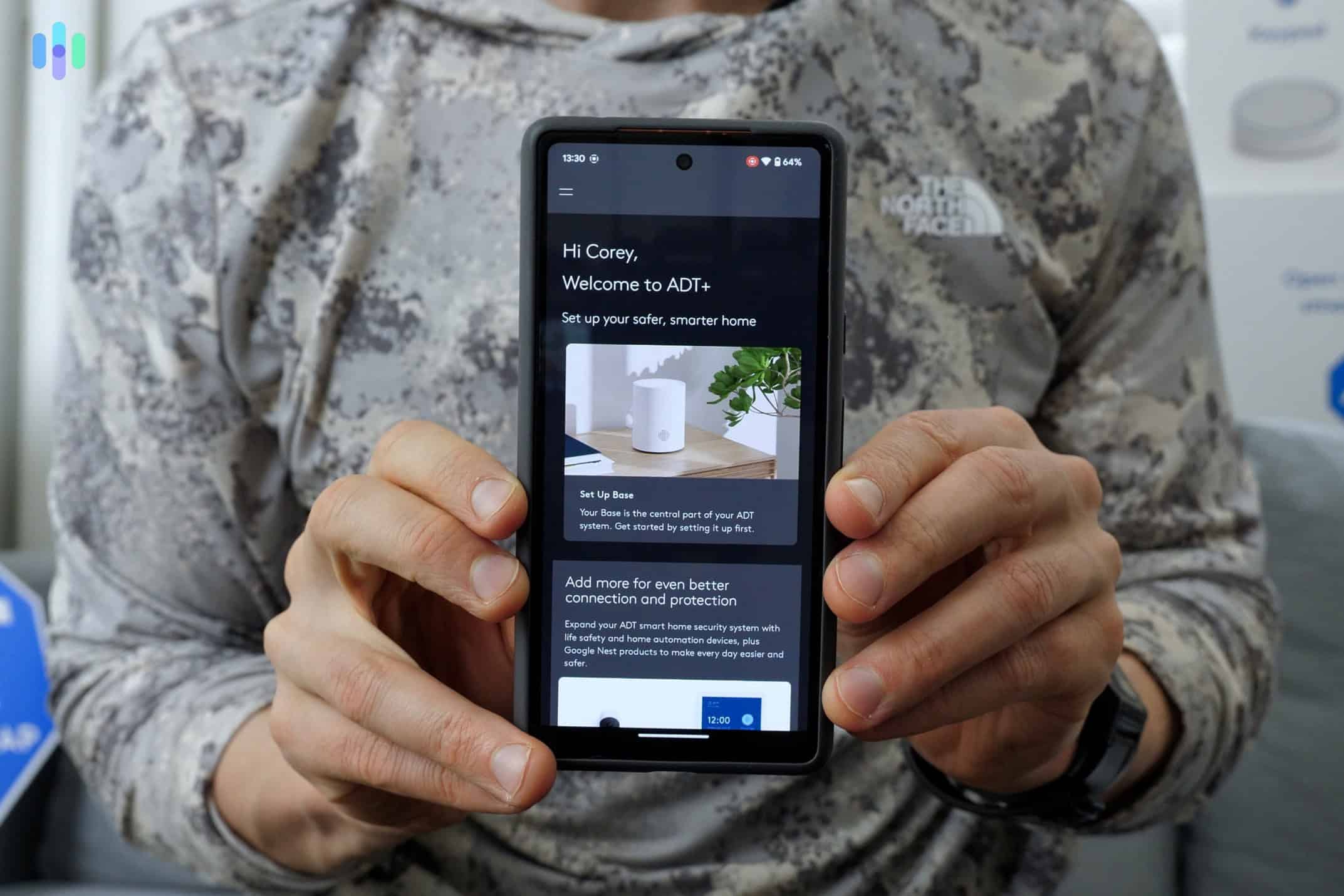
ADT+’s greatest feature is how it’s incorporated Google Nest. You can use it as a substitute for the Nest App, so you’re not switching between screens to manage different devices. We could view Nest Cam footage and recordings, control our Nest smart home devices, and manage the security system including features like Trusted Neighbor.
ADT’s Customer Support
You can contact ADT 24/7 via phone, email, and live chat. Alternatively, you can search for an answer yourself in their knowledge center. This is sometimes the best option as we’ve had mixed experiences with the support team.
During a live chat, someone sent a link to a page that had nothing to do with our question. But then another time we had amazing support while we were trying to set up a motion sensor. So we can’t say that ADT is one of the worst security systems in the market.
Expert Tip: If you need help with ADT, use live chat before you call them over the phone.
Find out if ADT can protect your home like other home security systems
We tested ADT and compared it side-by-side with other brands to give you the full picture.
Recap of the ADT Security System
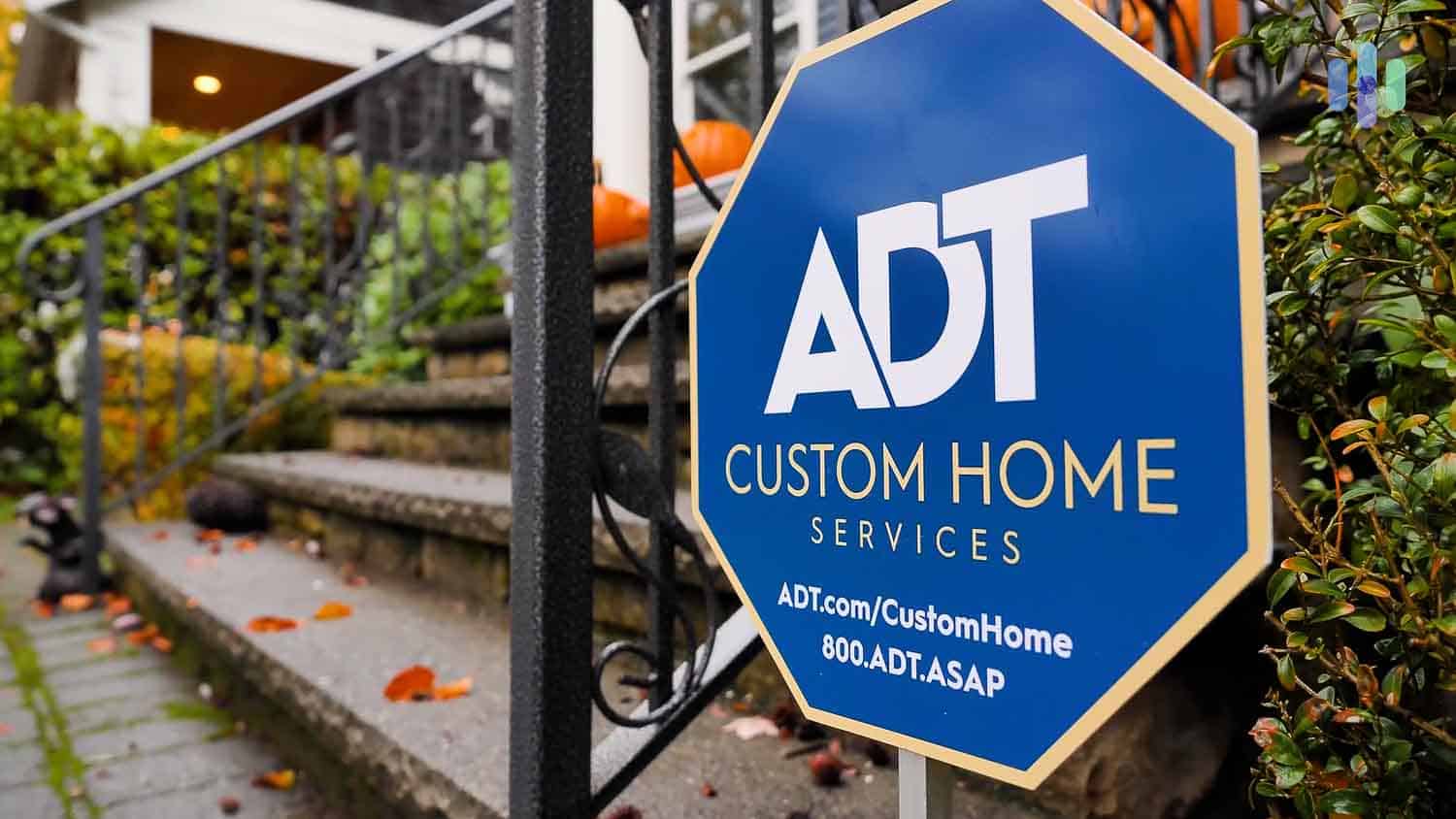
While it’s not the most flexible home security system in town, ADT is heading in the right direction. The company has ditched long-term contracts, and professional installation and calling ADT are optional. The addition of a user-friendly, all-in-one app for ADT and Nest features, like Trusted Neighbor, helps solidify its spot on our best home security system list.
But it’s not perfect. We wouldn’t recommend ADT if you’re looking to monitor the system yourself. It’s also not the cheapest option on the market, despite lacking a touch screen controller. However, ADT offers good bang for your buck, and we can’t wait to see what comes next.
ADT FAQs
-
Can I use ADT without professional monitoring?
ADT has a self-monitoring plan with basic features like receiving system alerts, but only if you self-install the system. Professionally installed systems don’t get this option. However, we recommend a professional monitoring plan anyway to gain cloud storage for video recordings, smart home integration, and Trusted Neighbor.
-
What equipment comes with an ADT security package?
You can build an ADT system from the ground up or choose one of its three equipment packages, which range from $349 to $719. If you need more devices, you can add them to your cart before checking out.
-
How much does ADT cost per month?
Professional monitoring costs start at $24.99 per month for Self Setup customers. For professionally installed systems, the same plan starts at $34.99 per month.
-
Does ADT require a contract?
You don’t need to enter into a long-term contract with ADT, but if you finance your equipment, which can be up to 60 months, you’ll have to sign a contract.
-
Does ADT work with smart home devices?
ADT integrates with compatible smart locks, light bulbs, and thermostats. You can also connect it to Alexa and Google Assistant for voice commands, as well as other Z-Wave products on the market.
-
ADT. (2020). ADT Pulse Approved Devices.
https://www.adt.com/pulse/approved-devices
-
FBI. (2019). Burglary.
https://ucr.fbi.gov/crime-in-the-u.s/2019/crime-in-the-u.s.-2019/topic-pages/burglary

